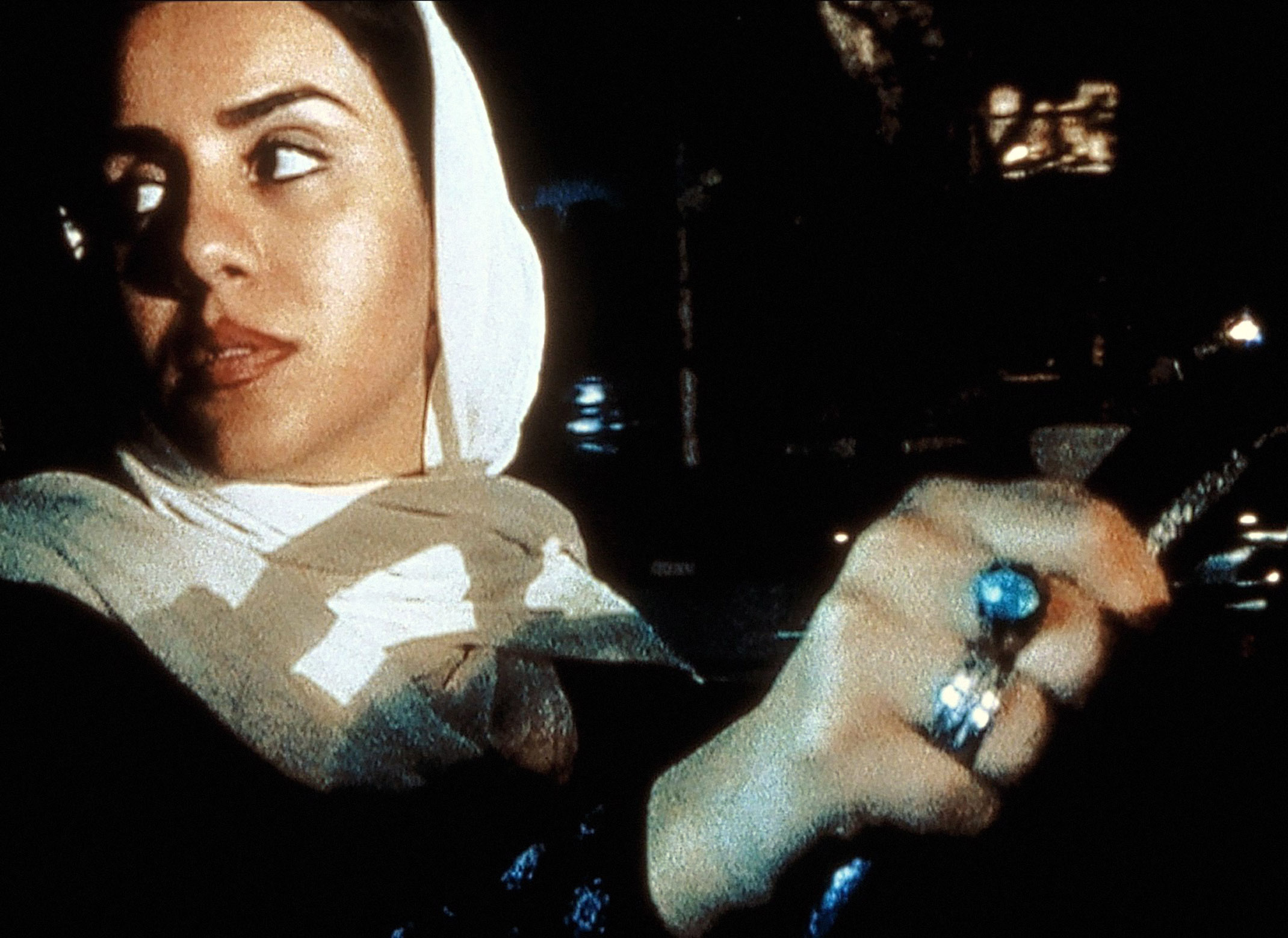
On 5th July 2019, the garment known as the bikini celebrated its 73rd birthday. Therefore, we are celebrating its most important appearances in Polish and international film.
On 5th July 2019, the bikini became 73 years old. The history of how it was invented is rather complex and goes all the way back to the 4th century BC. At the Sicilian Villa del Casale on the Piazza Armerina, it’s still possible to find ancient mosaics featuring women in scanty, two-piece bathing costumes, remarkably similar to the contemporary bathing suits that we know as the ‘bikini’.
The garment was named by a French engineer called Louis Réard, and resulted from his rivalry with another Frenchman who was a costume and fashion designer. In 1946, Jacques Heim presented the two-part Atom, which he advertised as: “The smallest bathing suit in the world”. A few weeks later, the innovative engineer Réard perfected his fellow Frenchman’s design and altered the sales pitch. This time, the world could witness “a bathing suit smaller than the smallest bathing suit in the world”. This was the first ever bikini – made from 194 square centimetres of fabric, and named after the Bikini Atoll in the Pacific, where in the mid-1940s the US tested its nuclear weapons. This new design was just as explosive. The designer had terrible trouble finding a model willing to parade in public wearing nothing more than a few triangular scraps of fabric linked together with string. Réard expected a scandal and thought all the newspapers would write about his world-record setting swimsuit.
As a joke, he decided to cover the fabric in newspaper headlines. In the end, the first bikini was modelled by a striptease artist at the public swimming pool Piscine Molitor. Micheline Bernardini was a dancer at the Casino de Paris who frequently performed in skimpy outfits (and sometimes without an outfit at all). Her appearance in that original bikini was met with absolute delight – she received over 50,000 letters from fans following its debut!
Other actresses and models followed her example. In the 1950s, the bikini began appearing on beaches around the Mediterranean Sea. Puritanical Italy and Spain reacted cautiously, and laws were drafted forbidding the wearing of bikinis on public beaches! Once the bikini appeared on the big screen in the early 1960s, however, governments were forced to give in. This was one fashion trend that would not be stopped. In the US, this coincided with the birth of surfing culture, which gained popularity with young people looking to express a sense of freedom. The singer Brian Hyland stormed the charts with a song about a yellow polka dot bikini. Ursula Andress stormed the big screen in the 1962 James Bond feature Dr No, emerging from the sea wearing a skimpy, sexy bathing suit featuring a wide belt. Besides, the word ‘skimpy’ was soon to take on a new meaning. In the 1970s, the world saw the invention of the first pair of thongs – panties that were smaller than the smallest versions of the bikini, which then became very popular in Brazil. Less triangle, more string.
How can you tell a bikini from a normal bathing suit? A wedding ring is needed for this test: if the suit can pass through the ring, it is a proper bikini.
Some bathing suits that appeared in films also became classic pop cultural items. Everyone remembers the red bathing suit worn by Pamela Anderson in Baywatch, or the one embellished with gold as worn by Carrie Fisher in Return of the Jedi. We all remember the Bond girls who emerged from ocean waves wearing beautifully designed two-part bathing suits.
And so we must wish the humble bikini a happy 73rd birthday. May it live to be a 100!
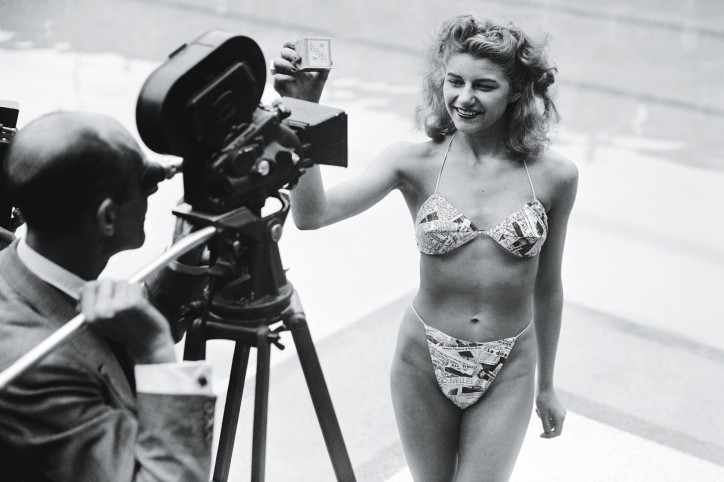
Illustration by Cyryl Lechowicz
The first time the bikini could be seen in a photograph was when it was worn by the Casino de Paris dancer Micheline Bernardini, modelling the “suit that was smaller than the smallest bathing suit in the world”, according to the advertising blurb. In 1946, the costume shocked and scandalized the public; 15 years later, it was popular all over the world.
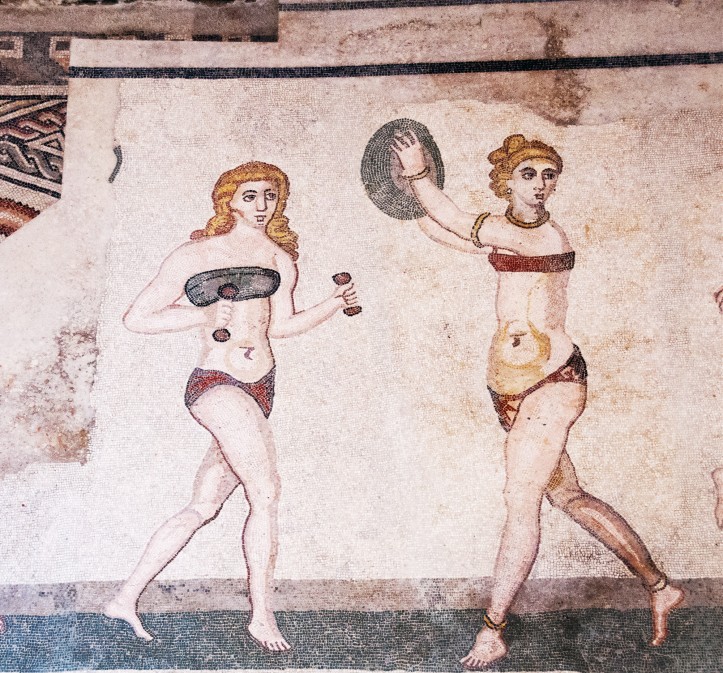
Illustration by Cyryl Lechowicz
Fragments of a mosaic discovered in 1950 in Sicily, dated back to the 4th century BC – the days of the late Roman Empire. The mosaics decorate the walls of the Villa del Casale at the Piazza Armerina.
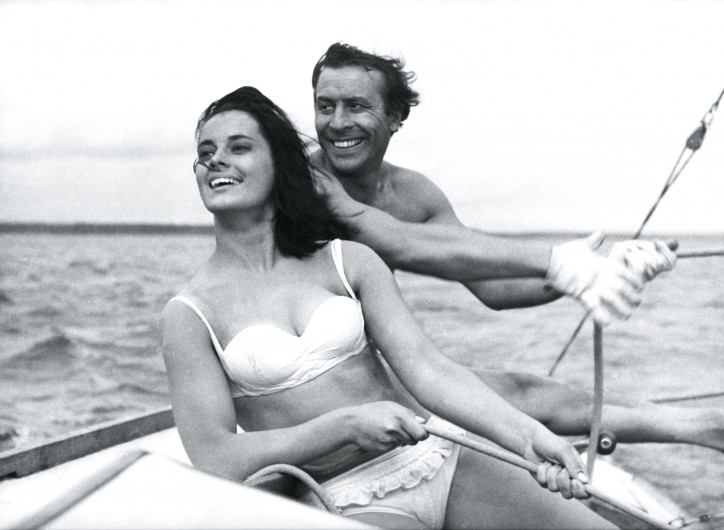
Illustration by Cyryl Lechowicz
Jolanta Umecka and Leon Niemczyk on the set of Knife in the Water, Roman Polanski’s debut feature film. Polanski’s casting call for the role of Krystyna, eventually played by Umecka, was held at the Legia outdoor pool in Warsaw. Among other things, the selection criteria included: a body that would look beautiful in a bikini. Once the shoot began, it turned out that Umecka couldn’t act or swim (but she does look fabulous in that bathing costume).
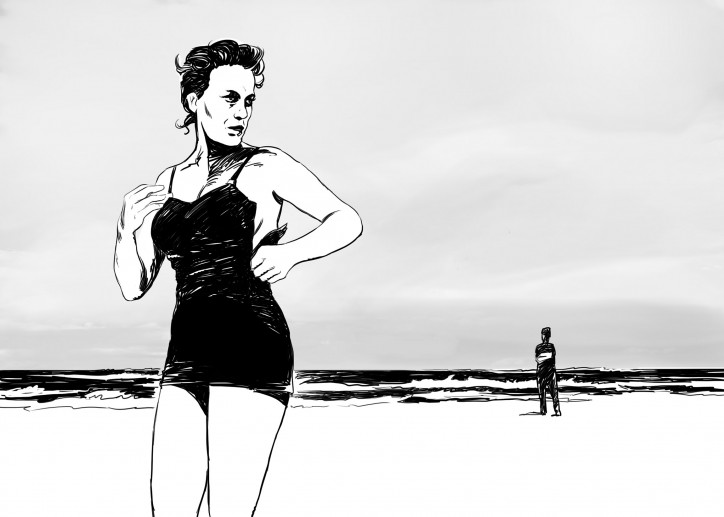
Illustration by Cyryl Lechowicz
A scene from the film The Last Day of Summer by Jerzy Laskowski and Tadeusz Konwicki, shot in 1958 on a beach in Szklana Huta. Irena Laskowska appeared in a special one-piece costume, similar to the one worn a year later by Marilyn Monroe in the film Some Like It Hot. Before the bikini became popular, one-pieces were the fashion item that ruled on the beaches of Europe and America, a trend that we’ve seen the return of in recent years.
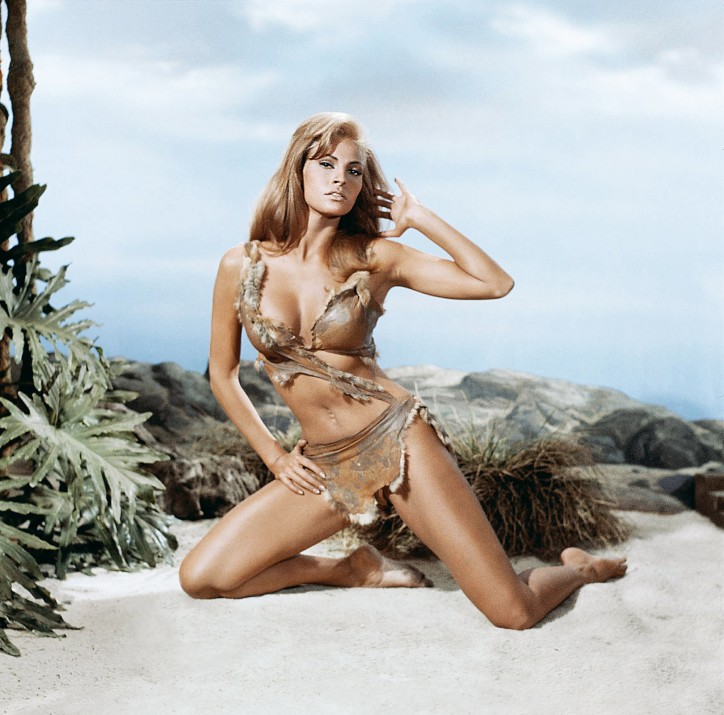
Illustration by Cyryl Lechowicz
Raquel Welch in a publicity shot from the 1966 film One Million Years B.C. Although the actress only has a few lines of dialogue in the film, her role has become iconic and secured her everlasting fame. Much of this was down to the prehistoric bikini that she wore in publicity images. This was the film that initiated today’s trend for a more athletic female form.
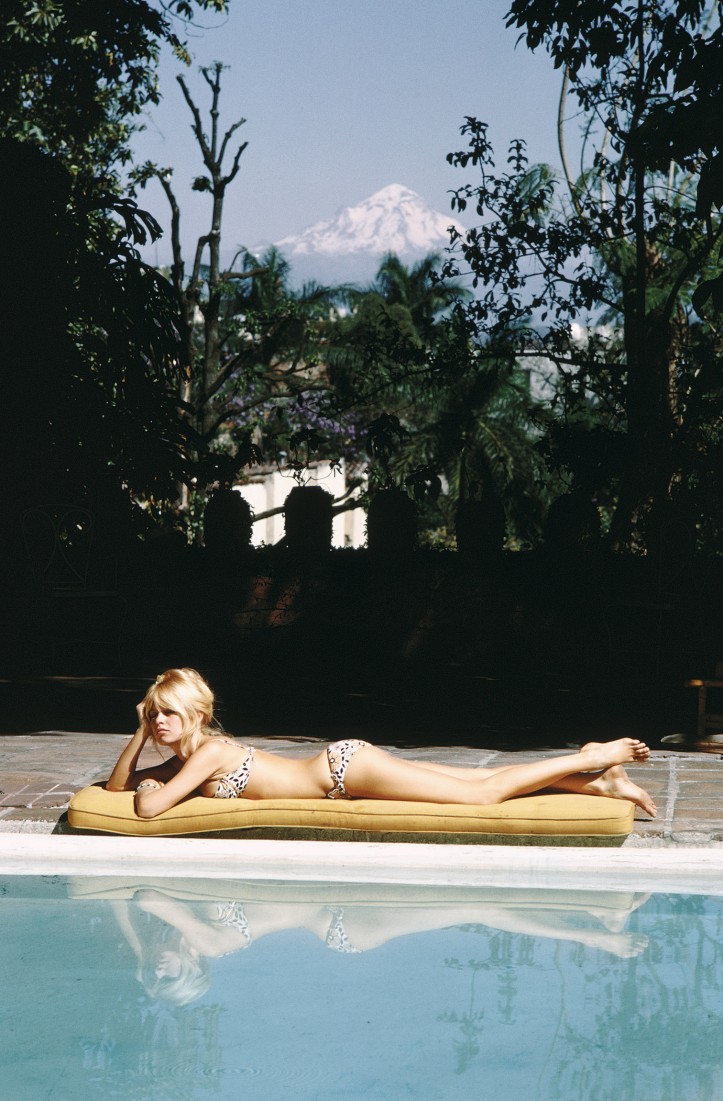
Illustration by Cyryl Lechowicz
This photograph was taken during a break in filming on the set of Viva Maria in 1965. This was the costume worn by Brigitte Bardot over a decade earlier in Manina, the Girl in the Bikini and became her signature look. She wore it in almost all of her subsequent films. The kind of bra that exposes the upper parts of the breasts is still called ‘the Bardot’ in honour of her.

Illustration by Cyryl Lechowicz
Barbara Brylska and Jerzy Zelnik on the set of Pharaoh directed by Jerzy Kawalerowicz in 1965. Four costume designers worked on the outfits for the film. They happened to be very risqué for the standards that applied in Poland at the time, but were in line with the intentions of Bolesław Prus, the author of the film’s source novel. This is how he described the Phoenician priestess Kama, played by Brylska: “A pretty, naked woman wearing a golden sash wrapped around her hips”.
Translated by Marek Kazmierski








